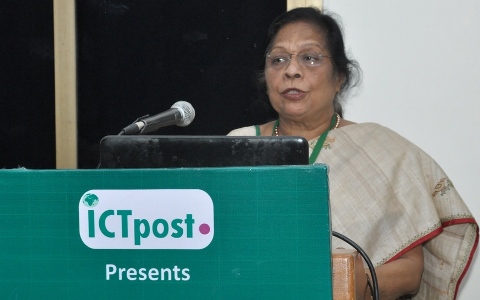
ICTpost Health IT Bureau
One of the most significant impacts of the ongoing information? revolution has been in the health sector. In the field of health care, ICTs have emerged as key instruments in solving many of the most pressing problems. ICT has helped to bridge the gap between the provider and seeker through telemedicine and remote consultations, enabled health knowledge management by institutions and agencies, and facilitated in the creation of networks between providers for exchange of information and experiences.
In fact, globally, the e-Health or health telematics sector is fast emerging as the third industrial pillar of the health sector after the pharmaceutical and the medical (imaging) devices industries. From a development perspective, ICTs are key instruments towards meeting the Millennium Development Goals (MDGs) related to health. In this respect, the increasing adoption of ICT in health care services of developing countries, by both public and private sectors, has been a welcome trend. All across the world, governments are pledging and pooling more and more of their resources towards developing ICT tools and systems with the ultimate aim of facilitating management, streamlining surveillance and improving health care through better delivery of preventive and curative services.
e-Health scenario in developing countries
Developing countries suffer from an extremely high incidence of virulent diseases, which comprises not only the prevalent contagious and communicable diseases, but also an increasing number of chronic diseases related to changes in lifestyle and consumption patterns. Much of the disease burden of low-income countries stems from a number of interrelated factors such as poverty, malnutrition, poor hygiene and living environment, along with gender and caste-based discrimination. Overall, health budgets are extremely low in developing economies, though in terms of disease burden, some 93 percent is borne by them.
According to the World Bank figures, expenditure on health in developed countries is 11 percent of their GDP, as compared to just 6 percent on an average for developing countries. Given this scenario, it is no surprise that the developing countries are woefully off-target in meeting the MDGs pertaining to reduction in child and maternal mortality and in control of major communicable diseases like malaria and HIV/AIDS. In this context, ICT is playing a crucial role. ICTs are increasingly playing an important role in improving the performance of health care system in developing countries, specially in enabling equitable access to health services delivery, besides networking, coordinating research and knowledge management. A number of successful initiatives have been reported regarding innovative use of ICT in health.
The growing popularity of e-Health in India is a healthy indication that the country?s development sector has the potential and the necessary technical expertise to set in place such initiatives. India is among the top global exporters of IT products. In that sense, it is much better placed than other developing nations in the world, where the digital divide translates into technological as well as infrastructure divide. The gap in India is not so much in terms of lack of technical knowledge and expertise as in actual infrastructural availability and awareness at the users? end. Thus we have several highly acclaimed initiatives, but are they in a position to survive and graduate from the status of initiatives to viable programme strategies in themselves? Sadly, the answer still is an elusive one.
Lack of financial support and sustainability: With appreciably low health sector spending, poorer nations understandably do not have the same level of financial support to ICT in health as the richer nations. Several major innovative initiatives may die an unknown death for lack of fund support towards upscaling and mainstreaming. This is one of the key reasons why very few IT projects in the development sector prove to be financially sustainable in the long run.
Poor quality of technology and infrastructure: IT is a technologically intensive sector requiring a heavy investment in infrastructure, including power supply, transport and Internet connectivity. However, most developing countries have insufficient and widely disparate levels of infrastructure development. Most of the African nations are facing this problem. Rapid technological growth is another feature of the IT sector, and the poorer nations may not be able to afford the innovations available in the market. This makes the state of IT infrastructure more dated and often less efficient than the existing systems worldwide.
Lack of technically competent staff at all levels: IT is also a knowledge-intensive industry and the application of IT tools require a basic level of technical competence among staff at all levels, ranging from top managers to the lowest field functionaries. However, an impressive base of such skilled human resource is not available in many of the developing nations, characterized by poor literacy levels. This is more true of sub-Saharan Africa. Also, the attrition rate of technically skilled persons is high, and such developing countries suffer from high levels of brain-drain as well. In the context of brain-drain in the IT sector, India deserves a special mention.
Lack of awareness, access and attitudinal problems among users: Perhaps one of the biggest impediments towards universal acceptance of e-health in developing countries is the lack of awareness among its people in general, towards ICT innovations and methods. This is specially the problem with ICT initiatives in health information dissemination. People may not be aware of such initiatives, or they may not have access to computers or Internet. The attitudinal problem is another area of concern it takes a long time to break the barriers of communication, which may thrive as a result of popular notions or cultural taboos.
Legal and policy issues: Another major problem in many of the developing nations is the lack of a clear policy direction towards ICT, coupled with lack of political commitment and ambiguous legal framework. A clear-cut policy framework is essential for systematic and coordinated development of ICT initiatives. Another problem in the developing countries is poor data management, which often leads to breaches in data security; one of the major deterrents to large-scale adoption of e-Health. Especially in a sensitive field like health care, where the patients’ data is essentially private and sensitive in nature, this poses a major impediment towards smooth adoption of e-Health.
The Indian story: A silver lining
In the Indian context, the major problems include the poor reach of ICT services in rural areas, poor literacy levels leading to low awareness and utilisation levels, and insufficient infrastructure development.
More than sixty-six thousand villages and habitations in India with population above five hundred are yet to be connected by an all-weather approach road. Fifty-five thousand villages do not have a safe source of water supply. Over a hundred thousand villages in India are yet to be electrified. Even where there is electricity, the power supply is erratic and sparse in nature. More than three hundred and eighty million rural people in India are illiterate, of which 58.5 percent are women. These factors hinder the outreach of and access to ICTs in many of the remote backward regions. Centuries of ignorance, suppression, gender and caste discrimination have further erected strong cultural barriers to information sharing and dissemination. And yet we say that India lives in her villages. However, it is indeed heartening to note that India is among those developing nations where the progress in e-Health has been encouraging, despite the lacunas. While ICT application in Indian health sector still suffers from political apathy at regional and local levels, the positive factor is the commitment towards greater transparency, accountability and streamlining of programme implementation and management at the national level.
The union government also recognizes ICT as the most efficient enabling tool for achieving the said goals. This is having the desired trickle-down effect and several state governments have earnestly taken up e-Health monitoring and reporting systems for their public health programmes. Disease surveillance systems under IDSP in Andhra Pradesh and Tamil Nadu, and ICDS surveillance system in Orissa are some examples of such initiatives. Public-private partnership has been successfully used to achieve a convergence of technical resources and personnel in the e-Health sector, for such projects. Funding and technical assistance has also been received from several external agencies such as the World Bank and WHO.
Summing up, the task ahead is thus quite clear; more in the nature of creating an enabling environment, and involving each one of us as stakeholders. The universal application of e-health initiatives in all public health programmes in India is presently the need of the hour. e-Health can help us travel to a healthy India. editor@ictpost.com







